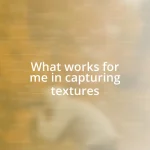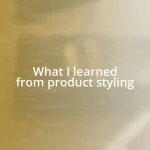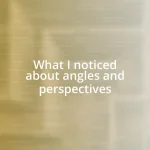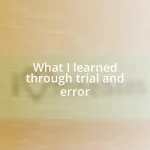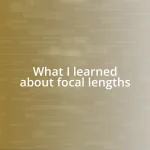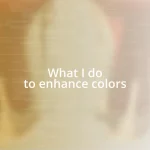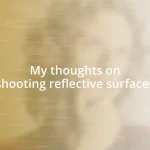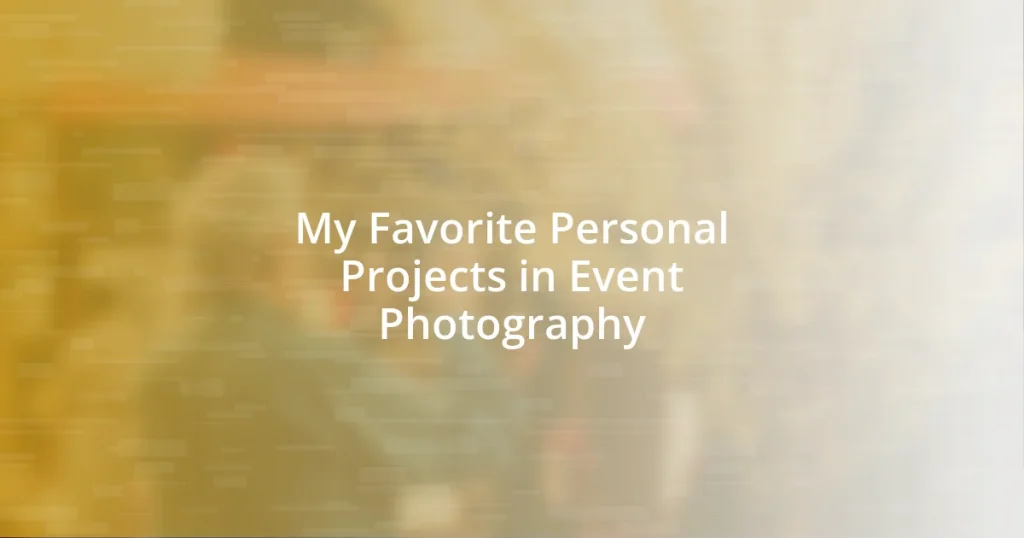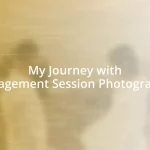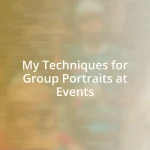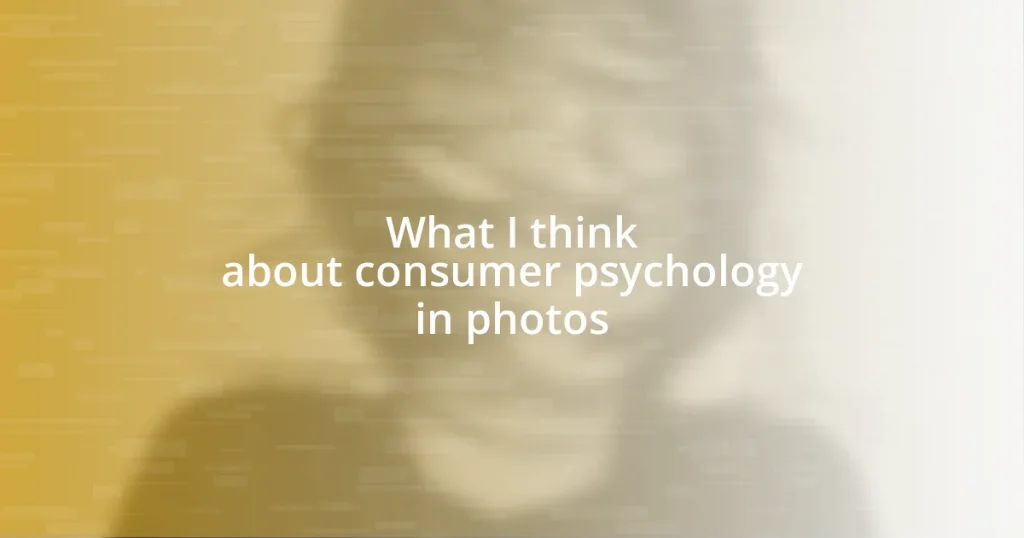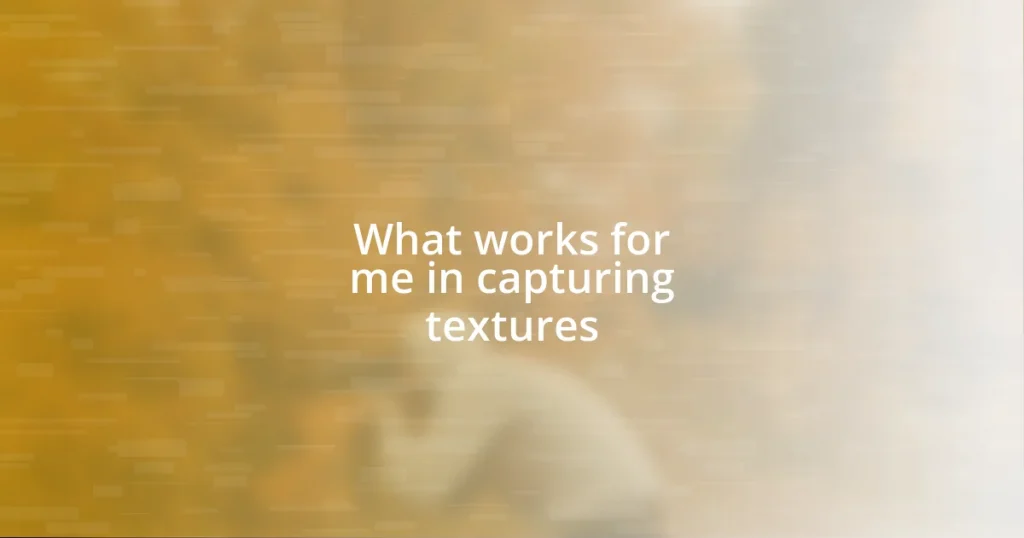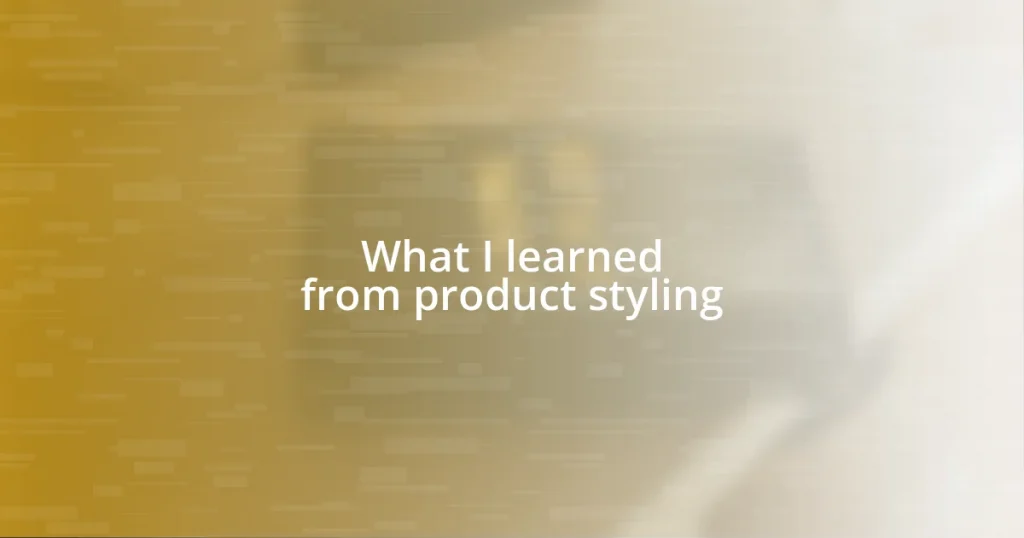Key takeaways:
- Event photography focuses on capturing spontaneous moments and emotions to tell compelling stories.
- Personal projects enhance creativity, technical skills, and community connections, fueling passion and growth as a photographer.
- Patience and adaptability are crucial in photography, allowing for genuine emotional captures and unexpected beauty in challenging situations.
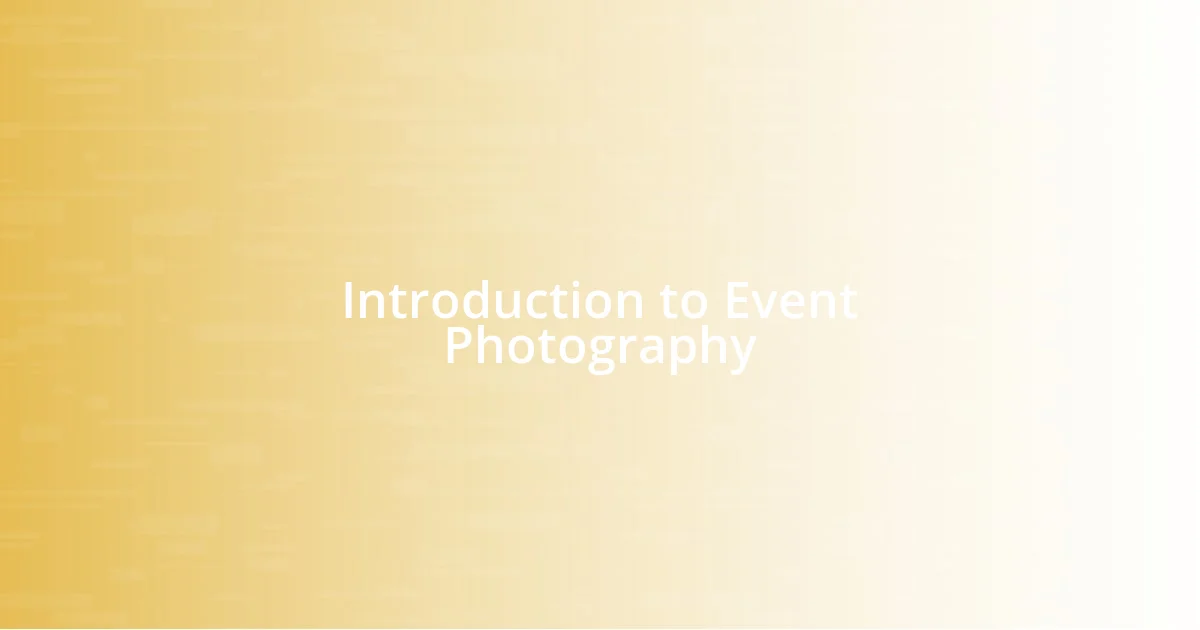
Introduction to Event Photography
Event photography is more than just capturing pictures; it’s about telling a story through powerful imagery. I remember my first gig at a wedding—I was both excited and terrified. Did I capture every joyful tear and dance move? In the fast-paced world of events, that pressure is palpable, yet it ignites a fire within, motivating me to perfect my craft.
The essence of event photography lies in seizing fleeting moments that often go unnoticed. Have you ever looked back at a photo and felt whisked away to that moment, almost like being there again? That’s the magic I strive for in my work. I recall a corporate event where a simple candid shot of a shared laugh brought an entire room together in spirit—an image representing connection during a busy hustle.
Each event holds unique opportunities for connection, laughter, and sometimes even tears. The thrill of capturing these raw emotions is what fuels my passion. For instance, I once photographed a non-profit gala where the stories shared were incredibly moving. How can you encapsulate such raw human experiences? It’s a challenge I embrace, knowing that my lens can preserve these memories for years to come.
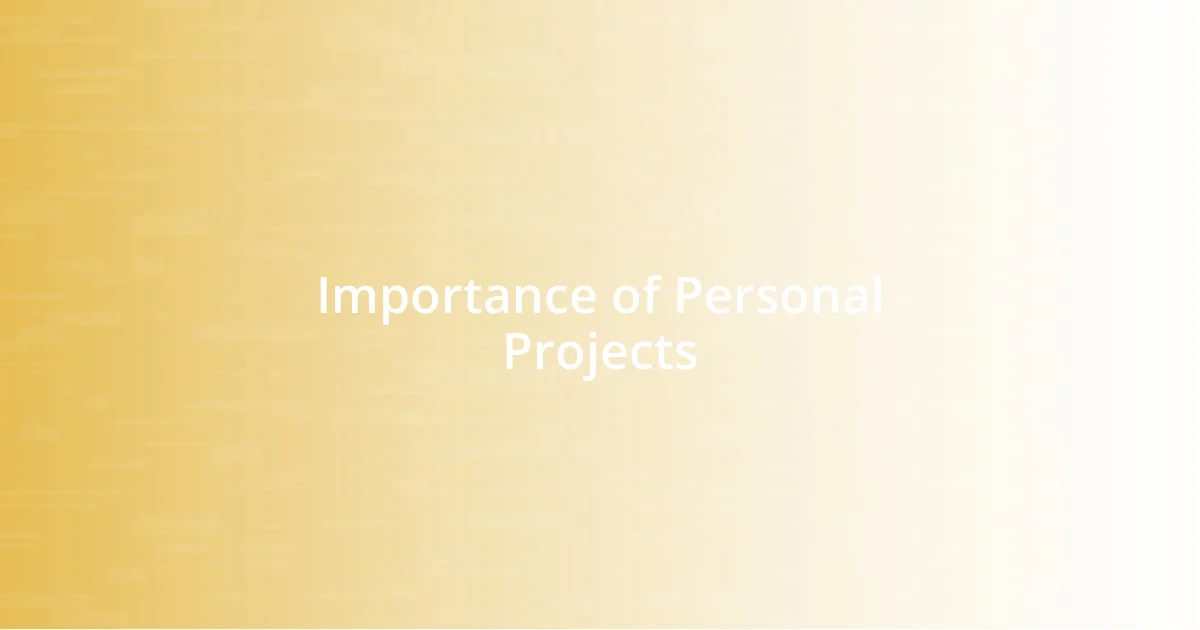
Importance of Personal Projects
Personal projects in photography are like a breath of fresh air. They allow me to explore my creativity without the constraints of client expectations. For example, I decided to document a local music festival one summer. The sheer joy of capturing spontaneous moments and experimenting with different angles was exhilarating. It reminded me that these projects rejuvenate my passion and push my boundaries.
Moreover, these personal endeavors help sharpen my technical skills. I remember a time when I focused on low-light photography during a nighttime event. It was challenging, but I learned how to manipulate my camera settings like never before. These experiences build my confidence, making me more prepared for commercial gigs. Ultimately, personal projects serve as a testing ground for new techniques, allowing me to grow as a photographer.
Engaging with personal projects also strengthens my connection to the community. When I cover local events on my own terms, I get to know the stories behind the faces. I recall volunteering to document a charity walk; many participants shared their inspiring journeys with me. That immersive experience brought a deep sense of purpose to my work, showcasing the profound impact of investing time in personal projects.
| Importance of Personal Projects | Impact on My Work |
|---|---|
| Enhances Creativity | Fuels Passion |
| Sharpens Technical Skills | Increased Confidence |
| Builds Community Connections | Meaningful Storytelling |
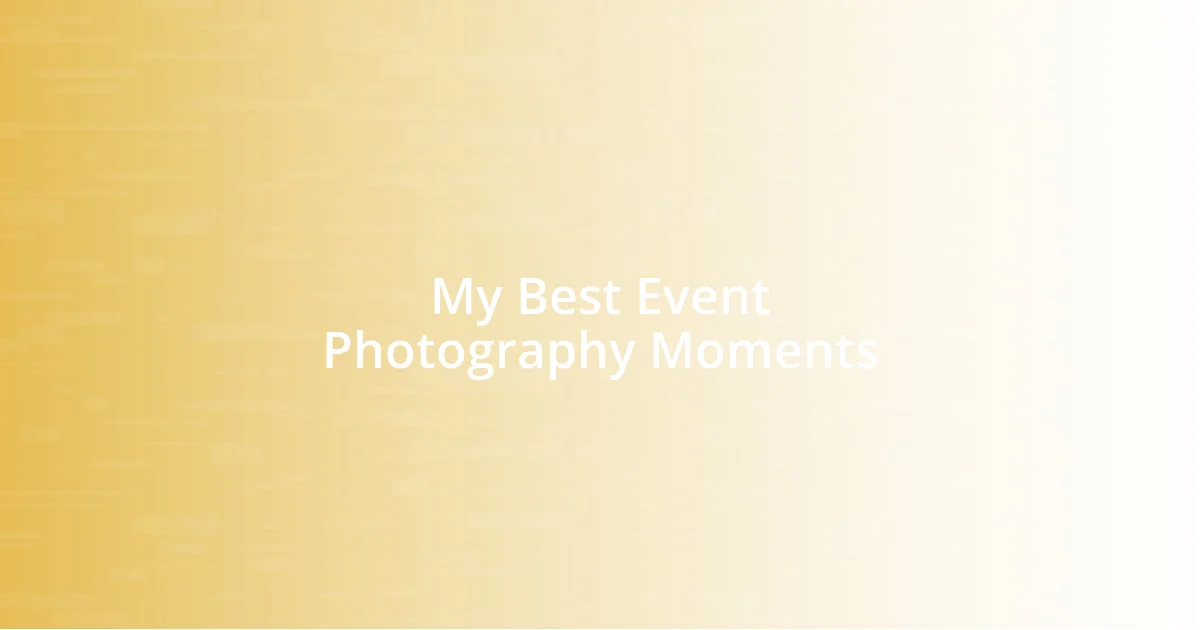
My Best Event Photography Moments
One of my favorite moments in event photography took place at a vibrant festival celebrating local culture. I remember wandering through the crowds, camera in hand, when I spotted an elderly couple dancing joyfully. Capturing that moment felt extraordinary; their smiles radiated love and nostalgia, and the way they moved together was pure magic. It reminded me how photography can freeze these fleeting expressions of happiness.
- The spark in a child’s eyes when they see a magician perform.
- A bride’s tearful embrace with her father just before walking down the aisle.
- A group of friends erupting into laughter as they reminisce over shared memories.
Later, I found myself at a tech conference, where the energy was electric. I positioned myself to capture a keynote speaker who passionately shared their vision for the future. The excitement in the room was palpable—everyone was hanging onto every word. In that instant, I understood that my role was to immortalize not just the speaker’s ideas, but also the inspiration spreading through the audience.
- The focused gaze of a young entrepreneur absorbing every detail.
- The animated discussions between attendees during networking breaks.
- A spontaneous applause moment that brought everyone together.
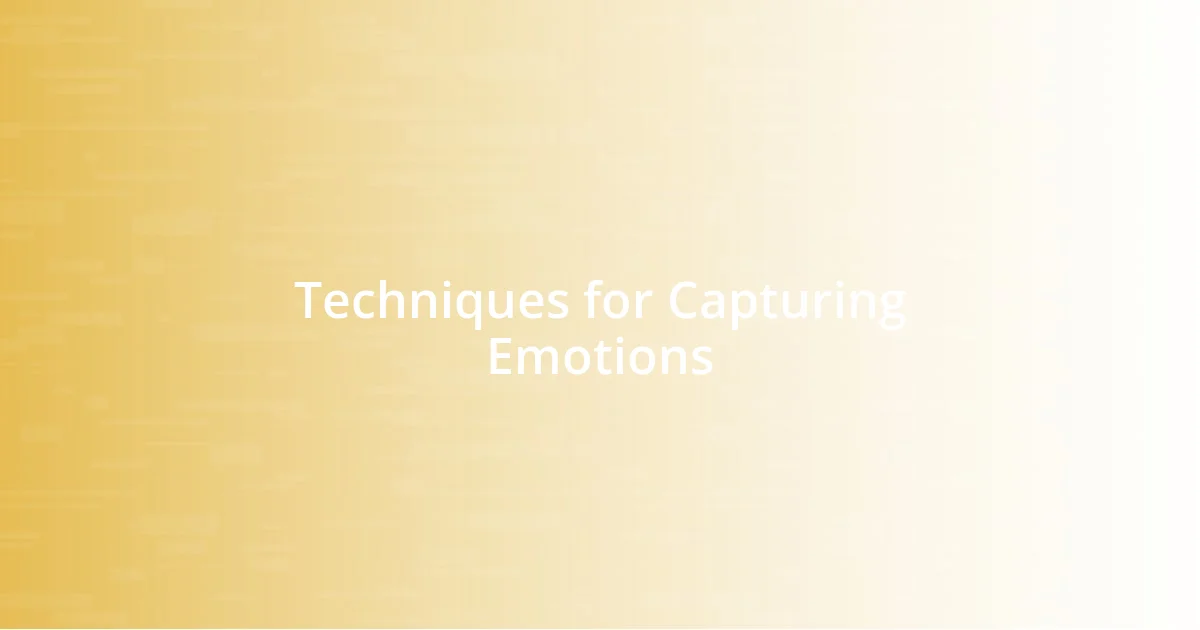
Techniques for Capturing Emotions
When it comes to capturing emotions in event photography, I find that maintaining a sense of spontaneity is crucial. I remember attending a friend’s wedding, and instead of waiting for the posed shots, I chose to quietly observe the guests. From the way the flower girl twirled in her dress to the laughter shared between the best man and groom, these unscripted moments were brimming with genuine emotion. Isn’t it fascinating how the most heartfelt expressions often arise when people forget about the camera?
Another technique that has worked wonders for me is to focus on details. One time, at a family reunion, I noticed the worn hands of an elderly relative gently resting on a younger family member’s head. That single image told a beautiful story of love, belonging, and the passage of time. By honing in on such intimate details, I’ve truly learned to communicate emotion and narrative in a way that resonates with viewers.
I also think it’s important to engage with the subjects, creating a connection that encourages more authentic expressions. For instance, while covering a community event, I started chatting with a shy artist who was showcasing their work. The moment they shared their passion, their entire demeanor shifted; the spark in their eyes was unmistakable. Isn’t it amazing how a simple conversation can lead to such powerful emotional captures? After that experience, I realized that building rapport can transform mere portraits into heartfelt stories.
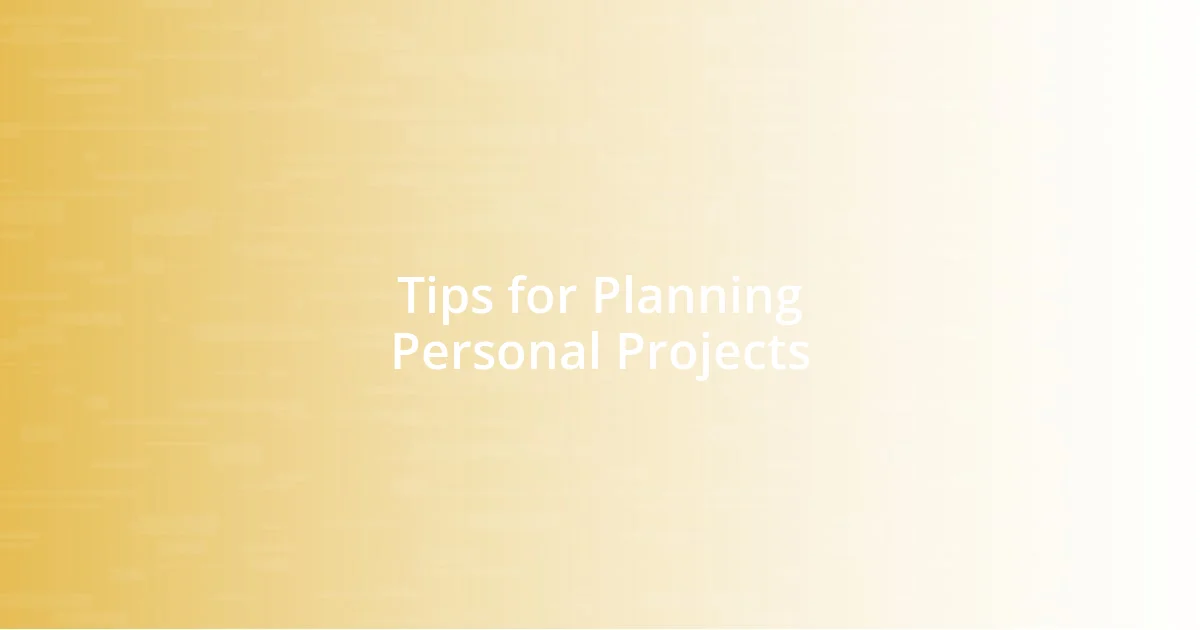
Tips for Planning Personal Projects
When planning personal projects in event photography, I always start by defining a clear vision for what I want to achieve. For example, during a community fair, I set out to tell a story about the diverse talents of local artists. By brainstorming specific themes and moments I wanted to capture—like the face of a painter lost in concentration or the joy of children interacting with performers—I found it easier to stay focused during the chaotic buzz of the event. Have I ever thought about how something as simple as a theme could guide my creative journey? Absolutely, and it made all the difference.
One thing I’ve learned is the importance of flexible scheduling. While I usually like to have a timetable, events can be unpredictable. During one concert, the headliner’s performance was delayed, and I used that time to wander around the venue, capturing candid moments that I hadn’t initially planned for. I think it’s essential to stay open to spontaneity; those unexpected captures often wind up being the most poignant. Don’t you find that the best stories often unfold in unplanned moments?
Connecting with other attendees beforehand can also enrich your project. At a recent cultural festival, I reached out to behind-the-scenes organizers, which allowed me to gain insight into the event’s significance. This connection opened up opportunities to capture moments that most photographers overlooked, such as the meticulous preparation before the festivities and the stories that built up to the event itself. It’s this depth of understanding that transforms a project from simply a series of images into a compelling narrative. How often do we underestimate the value of connection in our creative work?
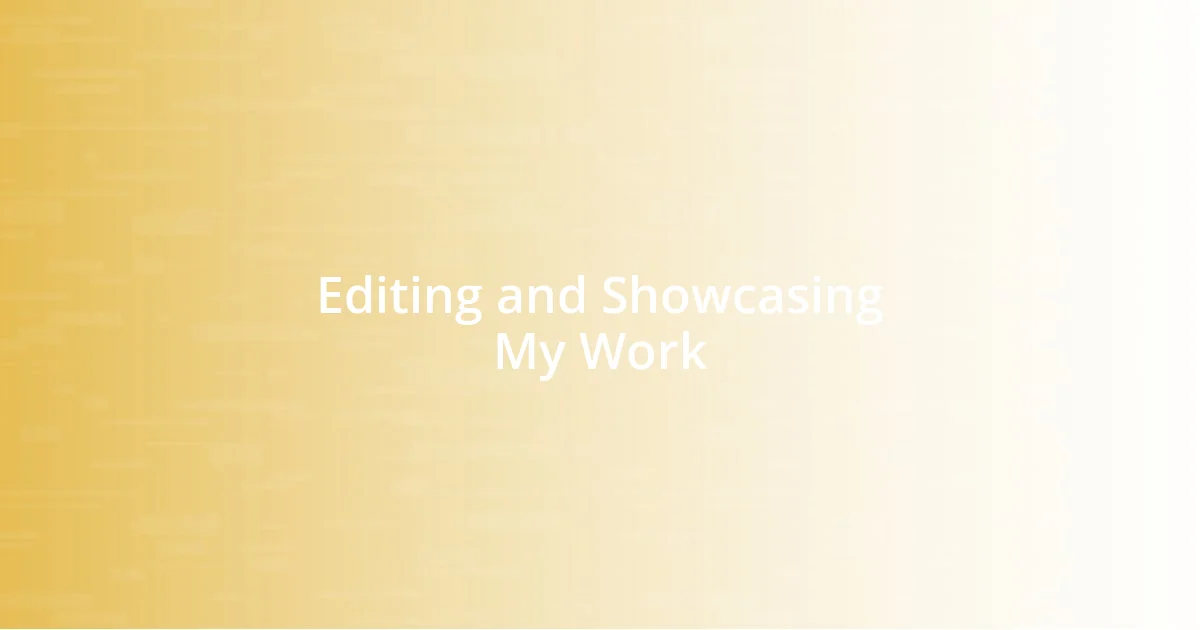
Editing and Showcasing My Work
Editing my photos has become a deeply personal ritual for me. After an event, I dive into my shots with fresh eyes, often feeling like an artist standing before a blank canvas. I remember one evening, engrossed in editing a vibrant festival, I felt so connected to the energy of those moments that it was like reliving the joy. I carefully selected each image to highlight not just the event’s energy but the stories inflating each frame. Isn’t it incredible how the editing process can breathe new life into our work?
In showcasing my photographs, I’ve experimented with different platforms, from Instagram to community exhibitions. I recall a time when I put together a small gallery at a local café, displaying images from a recent charity event. The reaction from viewers really struck me; they didn’t just see pictures; they felt the experience. I aimed to create a narrative flow through the pieces, leading the viewer on a journey of emotions. What a revelation it was to discover that an engaging display can transform single images into a captivating story!
I’ve also come to appreciate the power of storytelling in captions. I vividly remember posting a series of images from a friend’s engagement party and deciding to share snippets of my thoughts behind each shot. One image showcased a tearful toast from the bride’s father, and in my caption, I wrote about my own father-daughter moments. This personal touch resonated with many, creating connections that stirred emotions. Don’t you believe that giving our viewers a glimpse into our thought process can deepen their experience of our work?
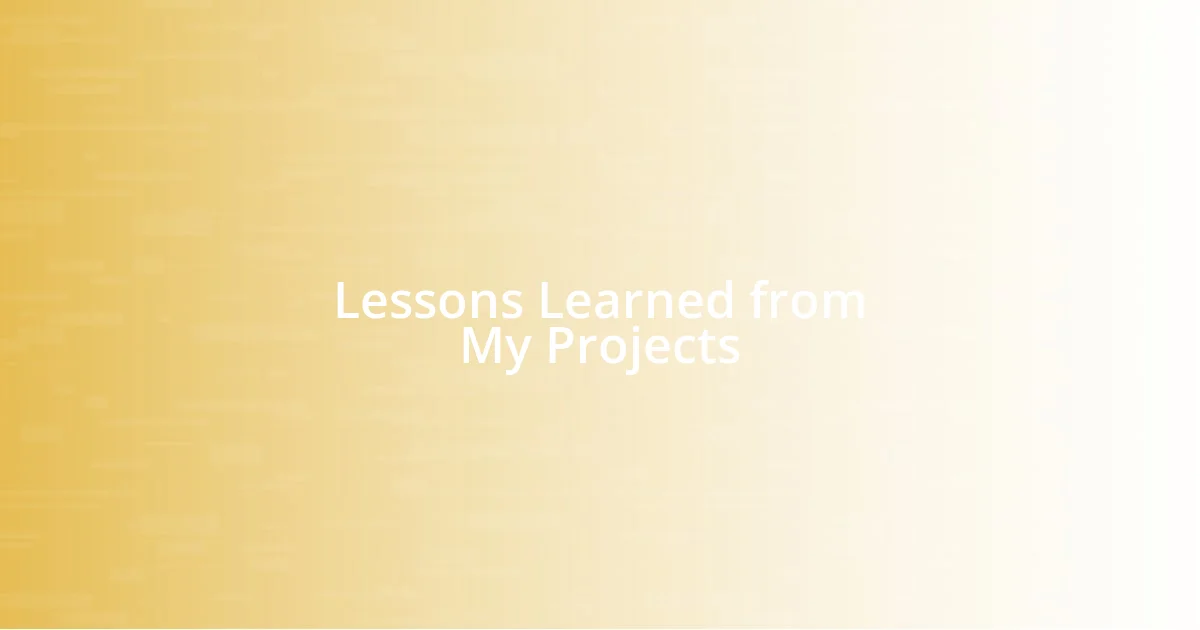
Lessons Learned from My Projects
Looking back on my personal projects, one vital lesson I gleaned is the significance of patience. During a local wedding shoot, I waited quietly at the edge of the dance floor as the couple shared their first dance. It was a moment that seemed to stretch naturally, and in that stillness, I realized how capturing raw emotions takes time—unlocking the magic that lies in subtle expressions and movements. Have you ever noticed how the most genuine moments often require a bit of waiting?
Another key insight involves cultivating an adaptable mindset. I vividly recall photographing a charity run where the weather turned unexpectedly grim. Instead of feeling frustrated, I adjusted my approach and focused on the runners’ determination against the rain. Those shots not only captured their resilience but also transformed a dreary day into something unique. Isn’t it amazing how adaptability can lead to unexpected beauty in our work?
Lastly, I’ve come to cherish the value of thoughtful reflection after each project. After a bustling street festival, I spent time reviewing my shots and jotting down my feelings about the event. Reflecting this way helped me identify which images truly resonated and why. How often do we pause to assess our work and its emotional impact? This practice has enriched my understanding of my style and purpose, pushing me to evolve continuously as a photographer.

